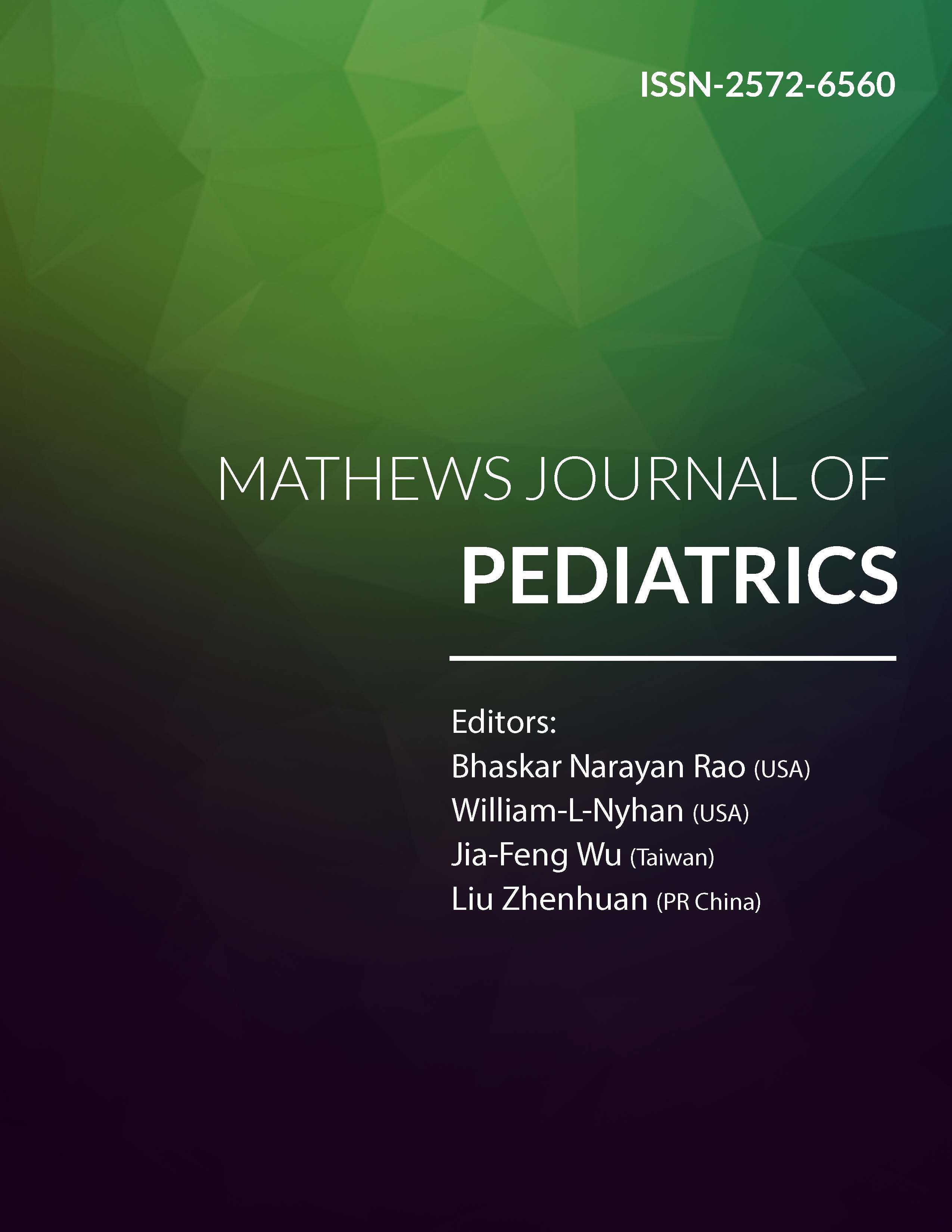
Information Links
Previous Issues Volume 3, Issue 1 - 2018
Vestibular Pathology in Pediatric Population Relevance of Vestibular Migraine
Sommerfleck PA1, Gonzalez Macchi ME1, De Bagge MD1, Bernaldez PC1, Carmona S2*
Corresponding Author: Carmona Sergio, INEBA Instituto de Neurociencias de Buenos Aires, Argentina, E-Mail: [email protected]
Received Date: 10 Apr 2018
Accepted Date: 29 Apr 2018
Published Date: 04 May 2018
Copyright © 2018 Carmona S
Citation: Carmona S, Sommerfleck PA, Gonzilez Macchi ME, De Bagge. et al. (2018). Vestibular Pathology in Pediatric Population Relevance of Vestibular Migraine. Mathews J Pediatr. 3(1): 011.
Background:Two of the most frequent symptoms in neurological consultation are headache and dizziness. Both have in common a multiplicity of etiologic causes as well as the need for an adequate symptomatic examination in order to make the correct diagnosis. These symptoms, when they appear at a pediatric age, are usually very troubling for the parents and, sometimes, disabling for the patient.
Objetives: To establish the prevalence of vestibular migraine (VM) in our series of pediatric patients.
Study Design: A retrospective, observational, descriptive, and cross-sectional study was performed.
Population: Patients aged 1-18 years who consulted the Otolaryngology Department of a Pediatric Tertiary-Care Hospital because of balance disorders between June 2014 and June 2017.
Results:Two hundred and forty seven patients 1-18 y.o. were included in the study; 123/247 (49%) girls y 124/247 (51%) boys. The median age was 9 years.
Within this group of studied patients 76/247 (30%) referred vestibular symptoms and headaches. Fifteen of them (20% - 15/76) met the diagnostic criteria for definite VM and 6/76 (8%) met the criteria for probable VM, i.e. 21/76 (28%) patients are included under this condition. This represents 8.5% (21/247) of the total sample included in this work. Fifty five patients 55/76 (76%) do not meet the VM criteria.
A family history of migraine is relevant data to be considered in this group of patients. 100% (15/15) of the patients with definite vestibular migraine had a family history of migraine.
Benign Paroxysmal Vertigo of Childhood (BPVC) is a migraine equivalent: 21/247 (8.5%) patients present this pathology in our series.
Thus, 21 patients with a VM diagnosis and 21 patients with BPVC. (Total: 42/247-17%- patients)
Conclusions: It can be established that, out of all children who consult due to "headache" associated to balance disorders, only a percentage below 10% meet the criteria for VM. The simple association of both symptoms does not define this pathology.
Balance Disorders; Vertigo; Dizziness; Vestibular Migraine; Childhood.